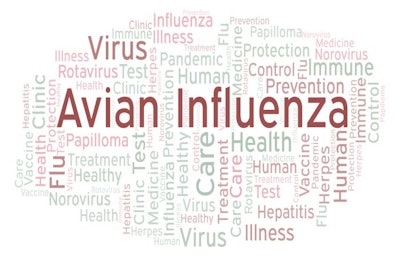
After an absence of two-and-a-half years, highly pathogenic avian influenza (HPAI) of the H5N8 subtype returned within days to Hungary, Romania, and Slovakia. Following reports of cases among Polish poultry last week, four countries in central Europe are now battling the virus.
The first country to officially report new cases was Slovakia. The virus was detected after three birds died out of a backyard flock of 22 head of poultry in the southwestern region of Nitra. The source of the infection is unknown, according to the agriculture ministry’s report to the World Organisation for Animal Health (OIE).
Hungary’s animal health agency has reported to the OIE two outbreaks of HPAI linked to the same virus variant. In both cases, the presence of the virus was confirmed after sharp spikes in mortality among commercial flocks. The first to be confirmed was an outbreak among 53,500 13-week-old fattening turkeys in the northern county of Komarom-Esztergom. Just one day later, the disease was confirmed among a flock of more than 115,500 ducklings at a farm in Hajdu-Bihar, which is in the east of country, and borders Romania.
In both Hungarian outbreaks, indirect contact with wild birds was suspected as the source of infection.
Within days, HPAI was confirmed in Romania — at a farm with almost 18,700 birds in Maramures. The county is in the northwestern part of the country, and shares a border with Ukraine as well as Hungary. As with the other outbreaks, the source of the infection is unknown, according to the national veterinary agency’s report to the OIE.
Just last week, the same HPAI virus subtype was reported at eight poultry farms in Poland.
Since then, a further three Polish outbreaks have been confirmed, reports the UK’s Department for Environment, Food and Rural Affairs (Defra). These bring Poland’s total outbreaks since the end of December last year to 11.
Latest cases were in the provinces of West Pomerania (Zachodniopomorskie) and Greater Poland (Wielkopolskie), according to Defra. Greater Poland is in central-western Poland, while West Pomerania is in the northwest, and borders Germany. All the country’s previously reported outbreaks were on farms in Lublin province in the south-east. The virus has also been detected in a wild bird found dead in the protective zone around one of the earlier Lublin outbreaks.
New HPAI outbreak in Taiwan
In a five-year battle to control HPAI linked to the H5N2 virus, Taiwan’s Council of Agriculture has registered a further outbreak with the OIE.
The latest to be affected was a flock of around 23,400 native chickens at Dounan in Yunlin county. More than 2,400 of the birds died, and the rest have been destroyed. This outbreak — reported by local media last week — brings the county’s total for 2019 to 52.
China confirms HPAI in wild birds
Previous local media reports of mass mortality among wild birds in China’s Xinjiang province have been confirmed to the OIE.
According to the agriculture ministry’s report, 75 mute swans at each of two locations in the province were found dead around the New Year. Authorities have confirmed the presence of the H5N6 virus subtype.
Non-notifiable avian flu confirmed in Northern Ireland
An H6N1 avian flu virus has been detected at a broiler breeder farm in County Fermanagh, according to the Department for Agriculture, the Environment and Rural Affairs (DAERA).
While stressing that this form of the disease is not notifiable, the chief veterinary officer has called on all poultry keepers to be alert for signs of the disease among their flocks, and to maintain excellent biosecurity.
Meanwhile, Defra has reported to the OIE that the avian flu situation in England has been “resolved.” All restrictions were lifted last week, following just one outbreak of avian flu linked to a low-pathogenic H5N3 virus in early December. This affected 26,838 broiler breeders at a commercial farm in Suffolk, a county in eastern England.
View our continuing coverage of the global avian influenza situation.


















